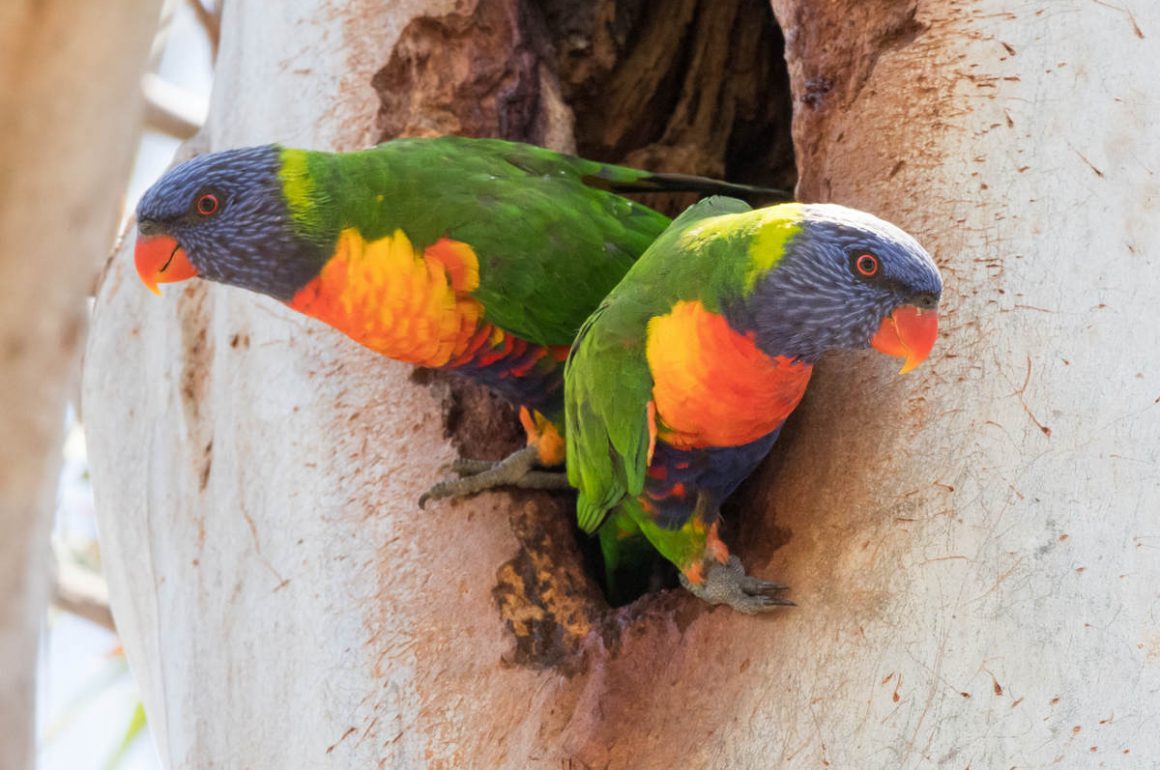
Some more photos of Australian birds mixed with irrelevant facts and mediocre half-jokes, as a way to pass away the time while being under lockdown in Shanghai (note: it is over now but this post was written during the lockdown).
If I was a Rainbow Lorikeet, I would probably only go outside at night, when darkness covers my exuberant colors.
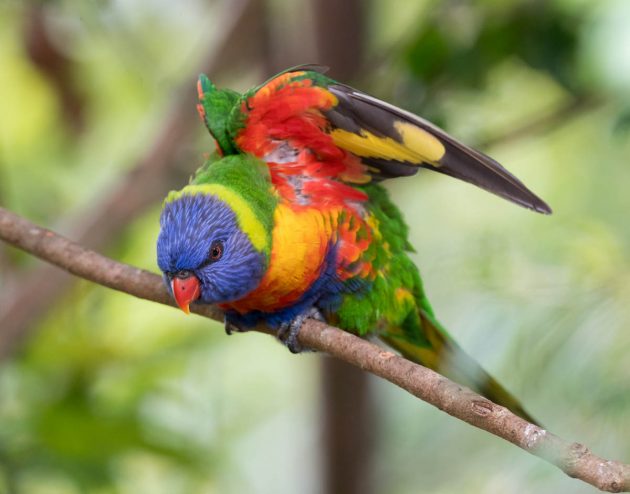
Quite likely, these birds are also the inspiration for Australian science communicator Dr. Karl Kruszelnicki. Thanks to Clare for introducing me to him.
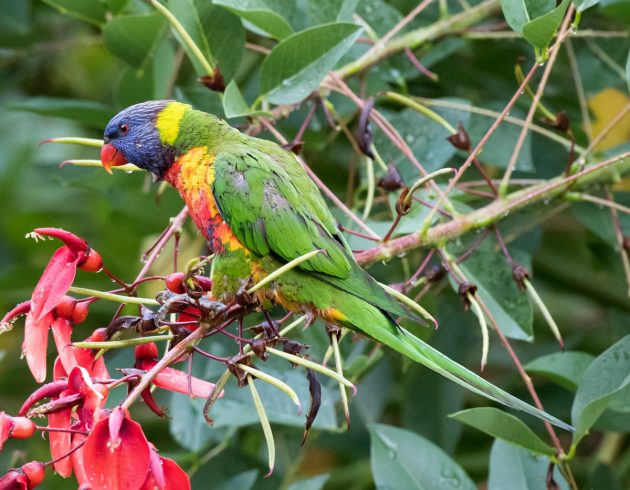
While it seems a bit careless to be so colorful – what with being preyed on – it is apparently a tradeoff between being seen by potential mates and not being seen by predators. Consequently, some parts of the lorikeet’s body have stayed green during its evolution – those that are easily visible from the top, where a predator would look out for them – while others (those facial pictures the birds put on their Facebook pages) are much more daring (source).
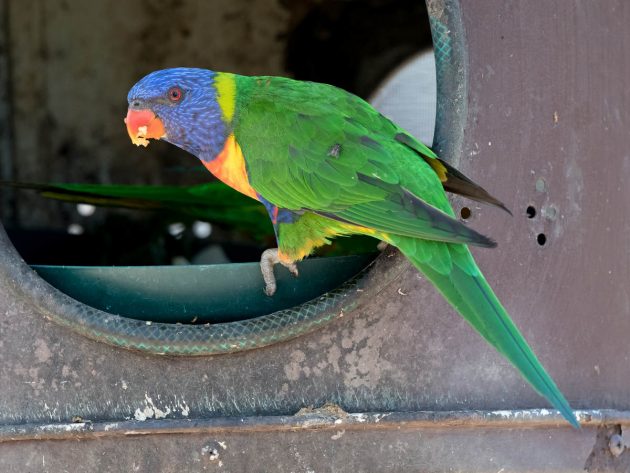
At least it is probably very hard to criticize your partner’s color taste if your own is so similar.
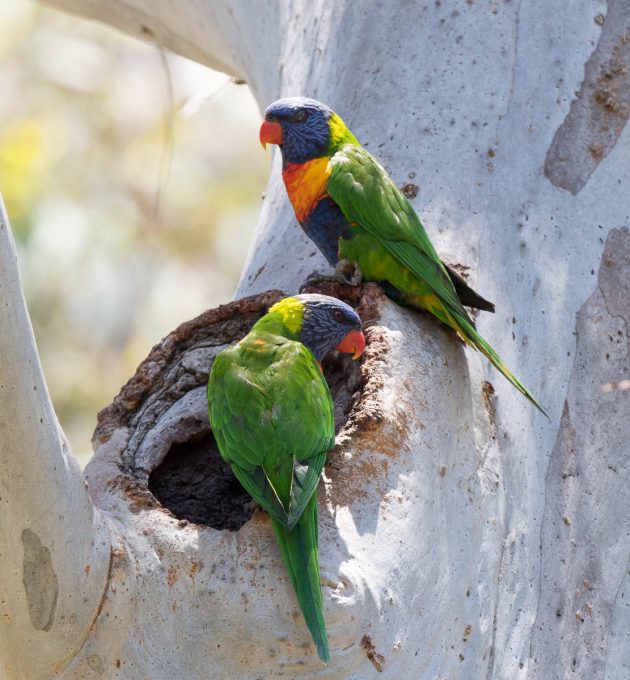
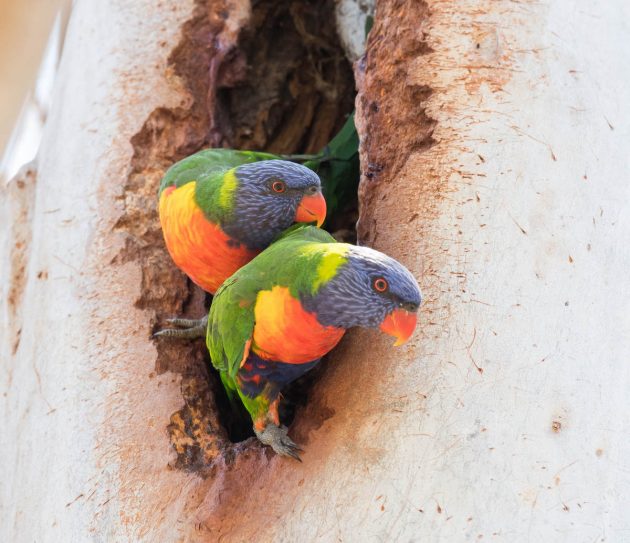
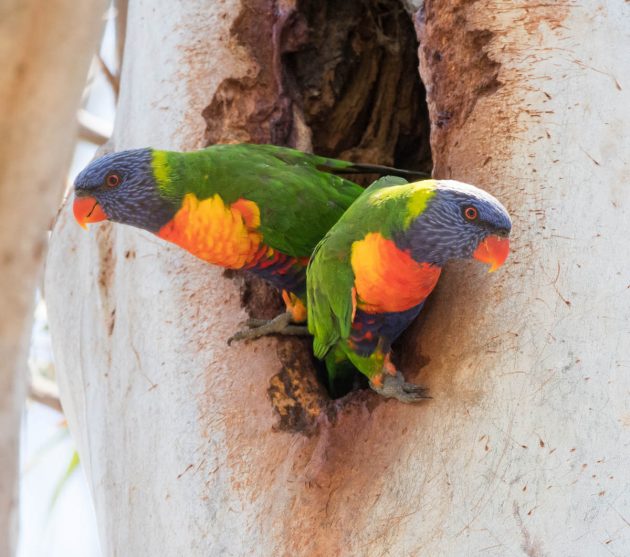
It must be a bit frustrating for a flower to be less colorful than the bird visiting it though.
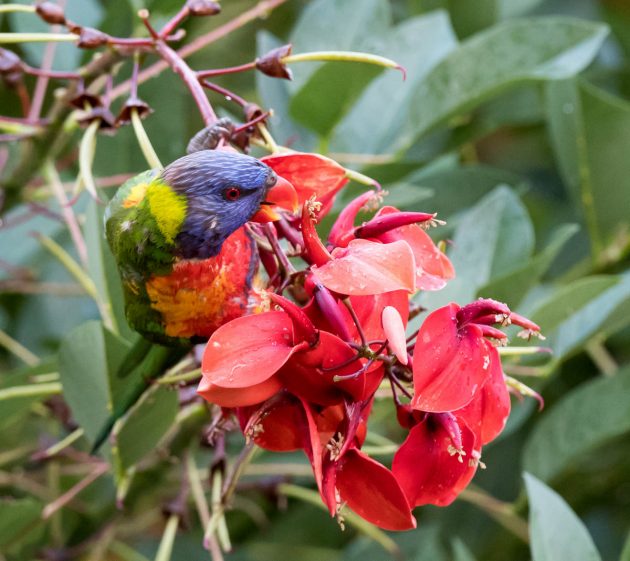
Apparently, the Rufous Whistler used to be known as the Rufous-breasted Thickhead due to its “noticeable breadth of cranium”. The source website itself quotes its own source, the delightfully titled “The Useful Birds of Southern Australia”, R Hall, 1907. Anecdotally, this first volume is reported to have been much more successful than its successor, “The Useless Birds of Southern Australia”, R Hall, 1908.
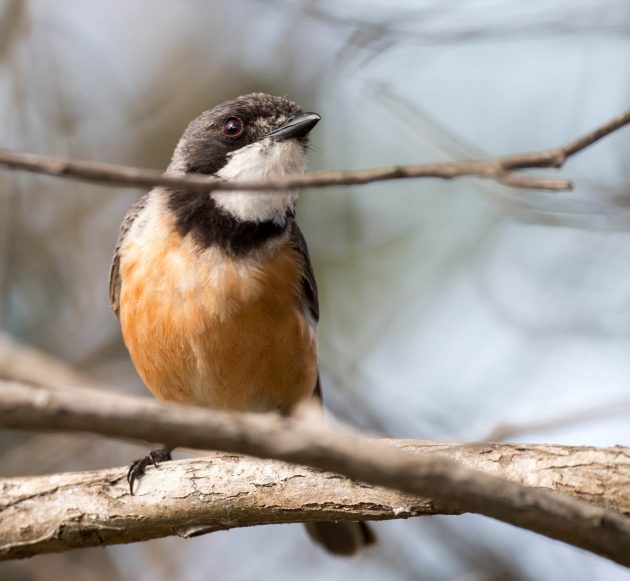
A useful male Rufous Whistler.
Welcome Swallows are probably also quite useful as they feed mainly on insects. This is the most common swallow in Australia.
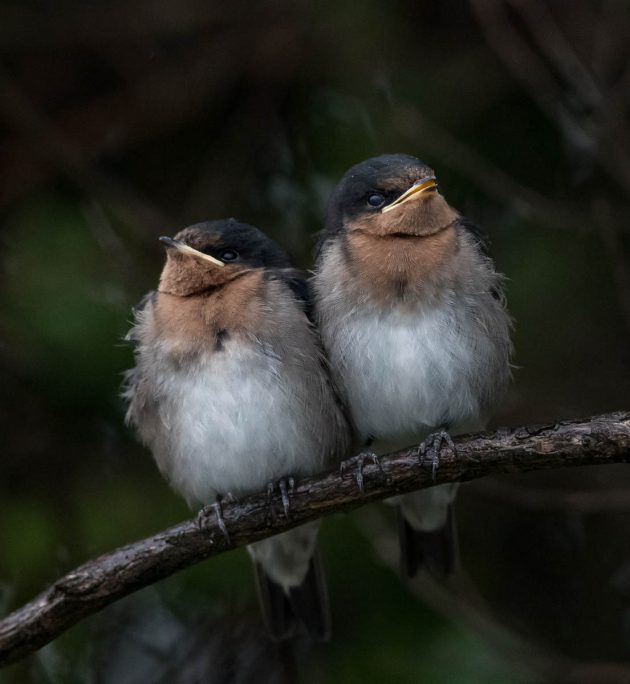
The name comes from sailors who knew that the sight of a swallow meant that land was not far away (source).
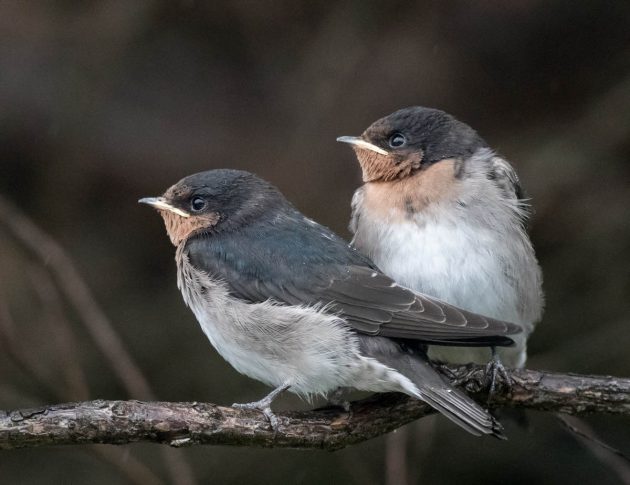
If you are thinking of having kids, let this photo be a warning to you.
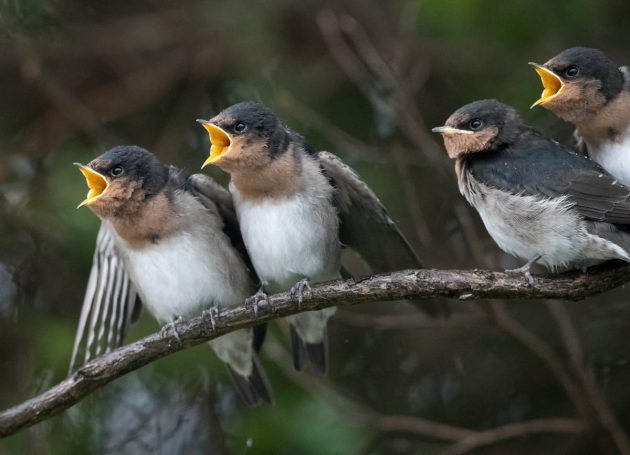
Readers with a pornographic mindset will enjoy the following information about the Dusky Moorhen:
“Simultaneously promiscuous, forming breeding groups of 2–7 apparently unrelated birds; individuals sometimes switch groups between seasons. Within group, all males copulate with all females.” (HBW)
Interestingly, this is different from the typical behavior of the otherwise rather similar Common Moorhen: “Monogamous and territorial; territory may be permanent; pair-bond sometimes maintained for several years.” (HBW)
The result of these Australian orgies are juvenile Dusky Moorhens.
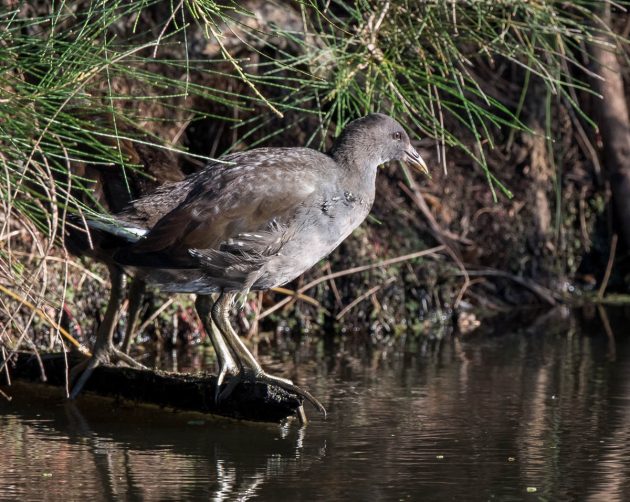
Honeyeaters are a large bird family (190 species) with a strong presence in Australia. Their name refers to their habit of eating nectar and pollen, though most of them also eat insects and/or fruit. According to “Australian Bird Names: A Complete Guide”, the White-throated Honeyeater was also called the Gay or Gay-tinted Honeyeater in the late 19th and early 20th centuries. The book hastens to assure us that “we may safely assume that it referred only to bright plumage”.
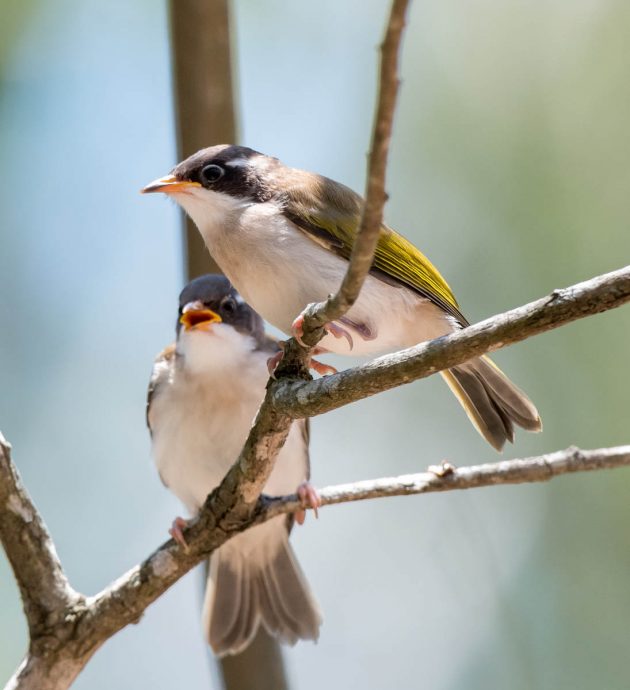
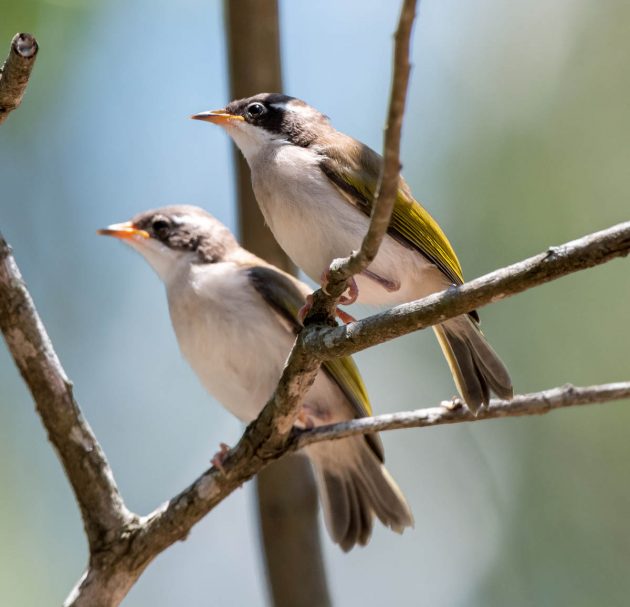
While larger, the White-eared Honeyeater seems to follow a somewhat similar color scheme.
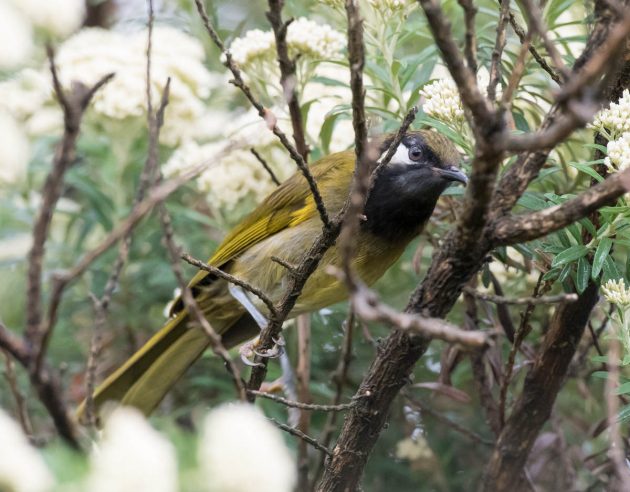
According to the HBW entry for this species, it “has been claimed that loss of native mammals after European settlement created shortage of nesting material, explaining this species’ penchant for taking hair from humans.” Though I suspect that this may just be some elderly Australian men trying to pin their loss of hair on a poor bird.
These two Grey-crowned Babblers look remarkably like Statler and Waldorf, the two old men of the Muppets Show.
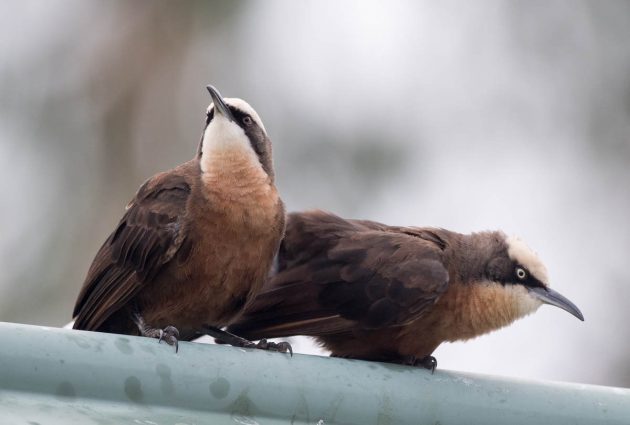
“Statler: Well, that was different.
Waldorf: Yep. Lousy…
Both: …but different!”
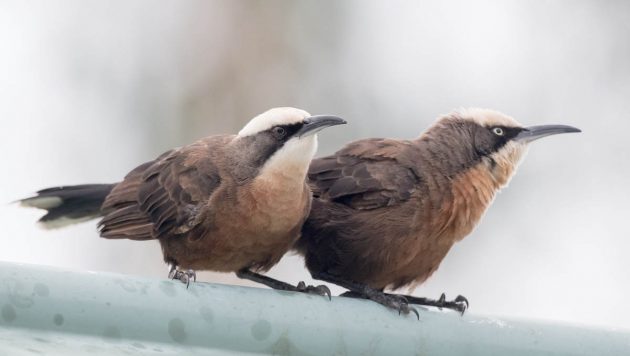
Like many Australian birds, they breed cooperatively with a varying number of helpers, often siblings or older offspring. Presumably, they tone down their grumpy old men’s behavior on these occasions.
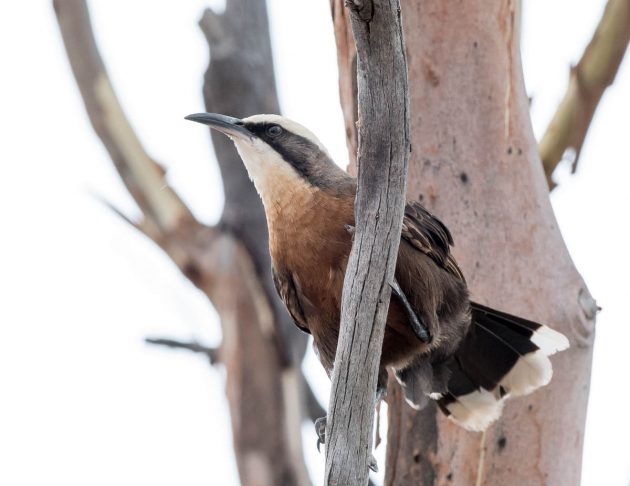
Oriental Dollarbirds – having on average a much higher IQ than the typical resident of Shanghai – accordingly spend winter in Australia, not in China.
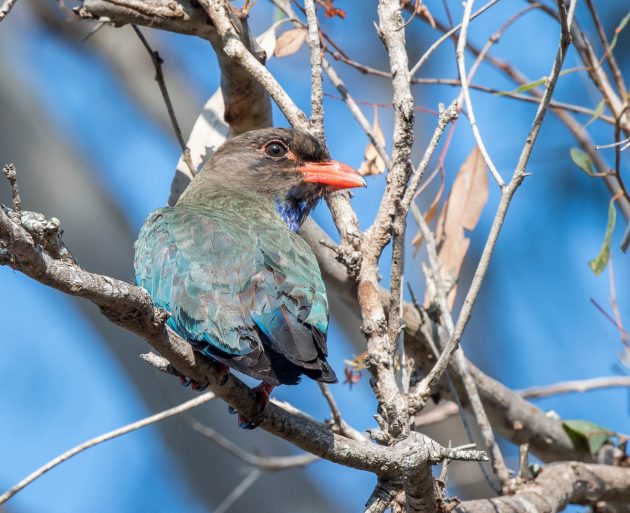
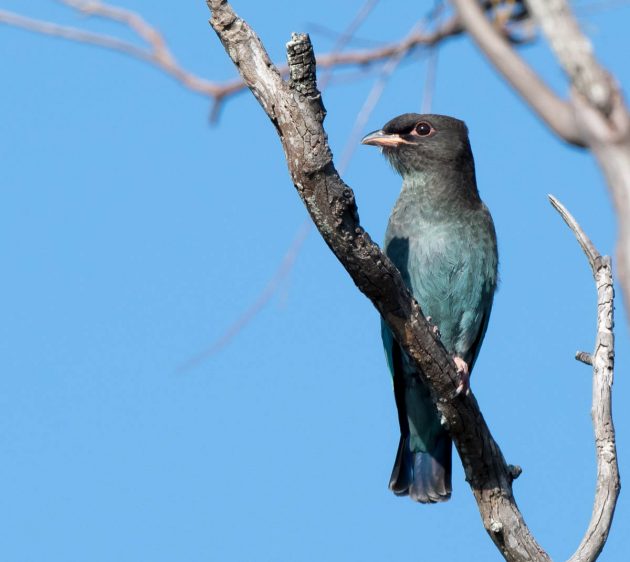
While Noisy Miners are generally not very tolerant of other bird species, it seems there is not much they can do about the Dollarbirds, at least in the photo below.
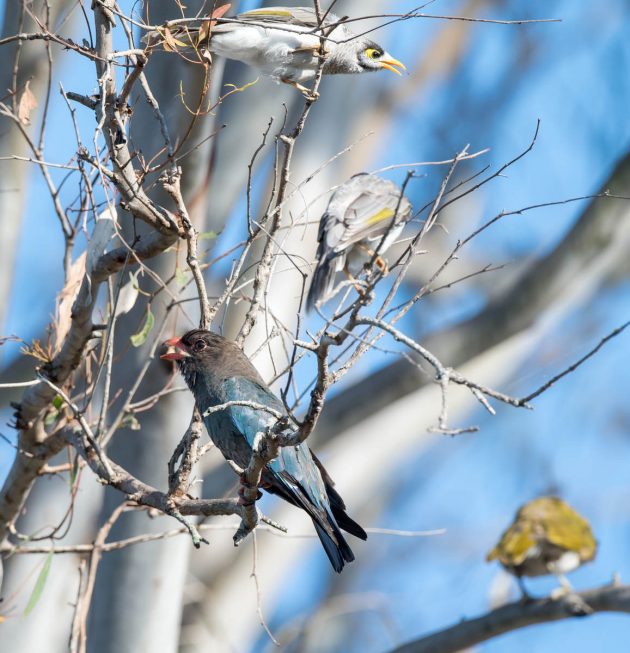
This is despite eBird stating that Noisy Miners are “aggressive and territorial; live in colonies and vigorously defend territories against pretty much anything that moves.”
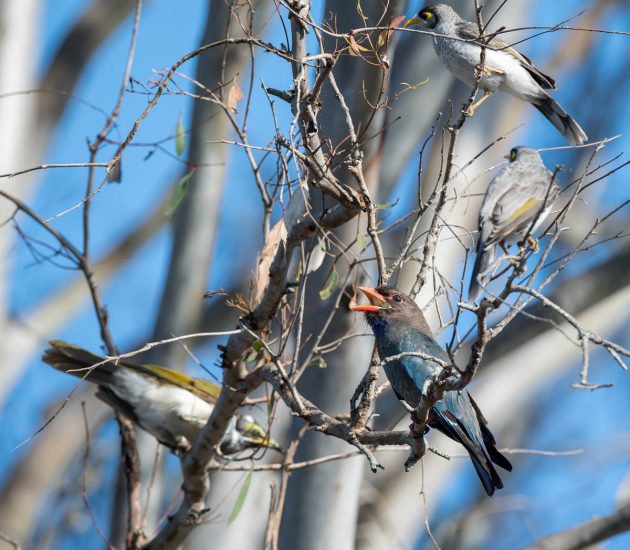
However, Noisy Miners have the advantage of being able to open sugar packets, something Dollarbirds probably have not learned yet: “Noisy Miners were observed consuming a human-provided food source. We describe here how individual Noisy Miners manipulated, opened and fed from sugar packets found at an outdoor cafe.”
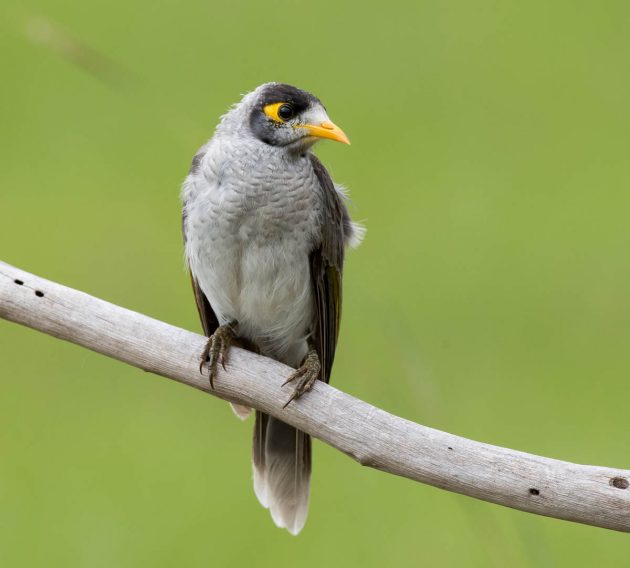
Noisy Miners may also be well-equipped to living in a human-dominated environment in other ways: “The calls of Noisy miners may be naturally well suited to being heard in noisy urban environments by having (a) dominant frequencies higher than low-level, anthropogenic noise and (b) several important call-types with frequencies above the main frequency range associated with urban noise.” (source)
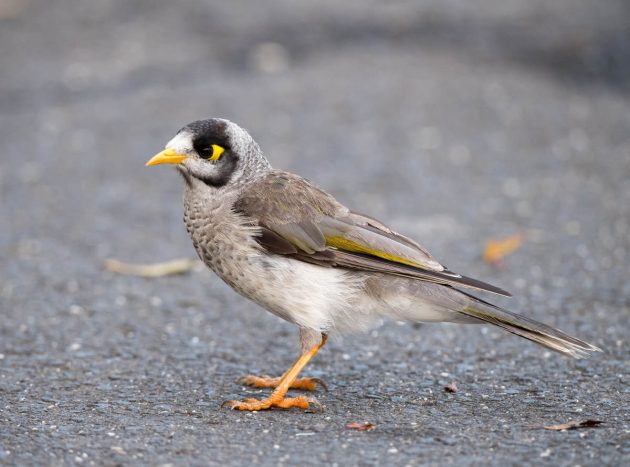
Similar to other honeyeaters, Noisy Miners feed primarily on nectar and insects when there are no outdoor cafes available.
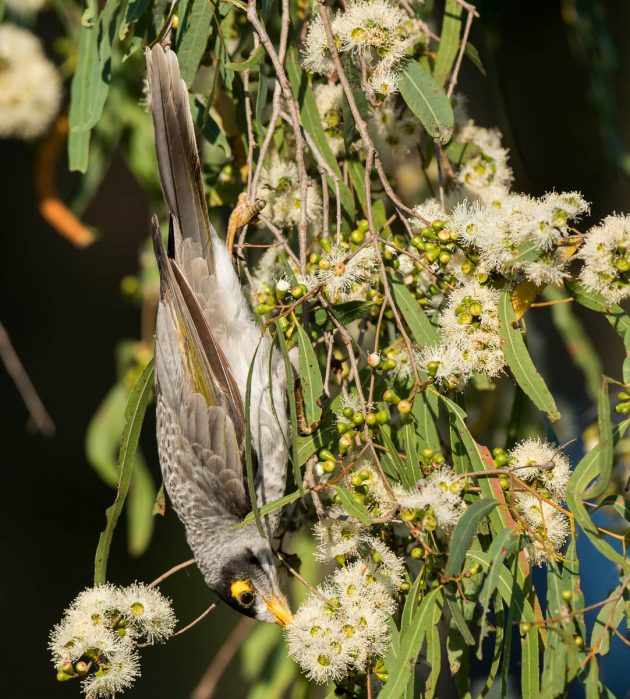
In terms of movement, Noisy Miners are the avian equivalent of couch potatoes. Their female-activity ranges near Brisbane measure 52-95 meters across, earning the sarcastic remark (by Tim Low, in his book “Where Song Began”) that “Bees are far more mobile than that”.
The Yellow-throated Miner looks quite similar to the Noisy Miner but apparently is less studied despite having a larger distribution.
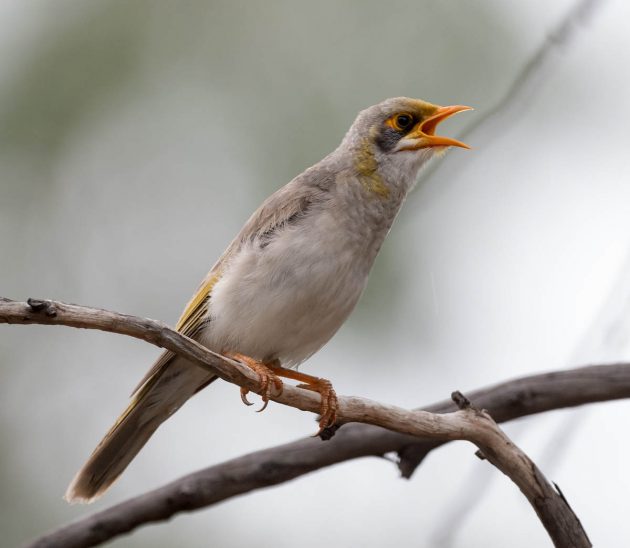
The name Miner is not actually a reference to the mining of minerals or coal, which are of limited use to birds. Rather, “miners were originally named due to their resemblance to the common myna of India that shares similar yellow eye-patch and legs … [although] common mynas are from the starling family and are not closely related to the honeyeater family” (source).
Which of course is the perfect transition to that bird, the Common Myna. Well, a better transition than what I usually manage.
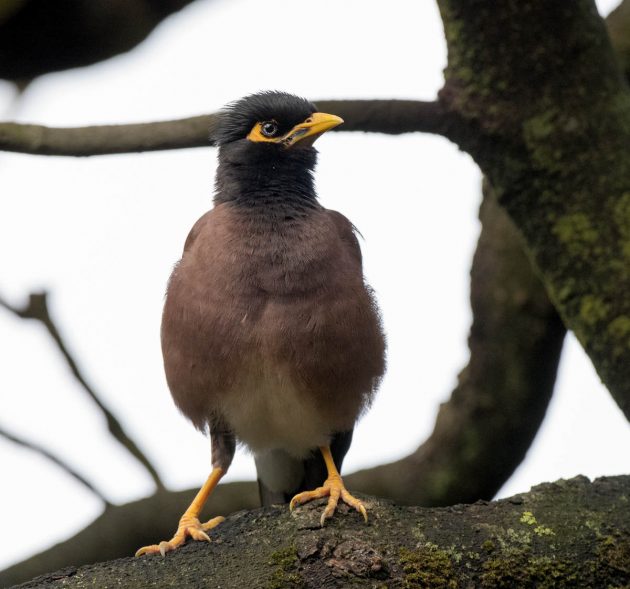
The Common Myna is an aggressive invasive species. In Australia, common mynas are considered to threaten native biodiversity due to their territorial behaviors and nest cavity competition (source).
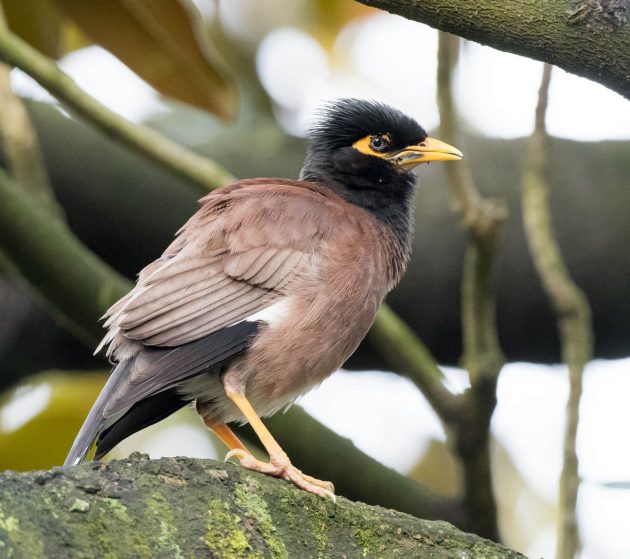
In a nationwide survey in 2005, the Australian public rated the common myna as the most significant pest, beating contenders such as the cane toad, the European rabbit, and feral cat (source).
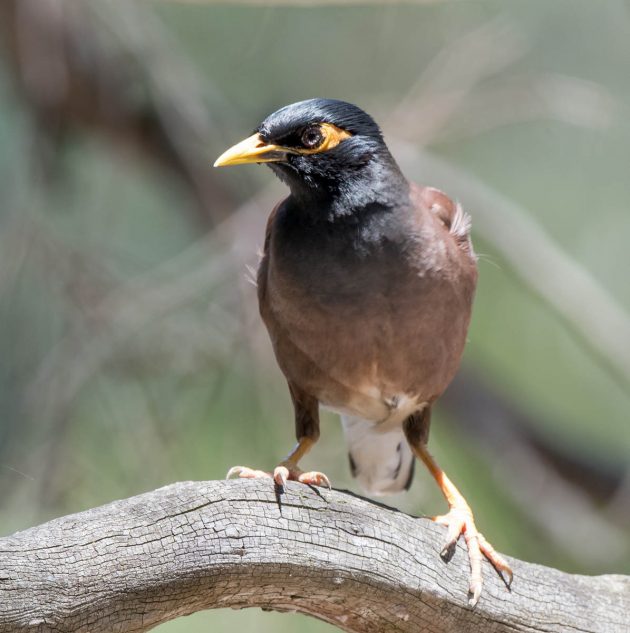
You know something is wrong when reading that a bird species – in this case, the Collared Kingfisher – has 50 recognized subspecies. And indeed, it seems the Australian subspecies (not sure if just one or several) are now recognized as a full species, Torresian Kingfisher.
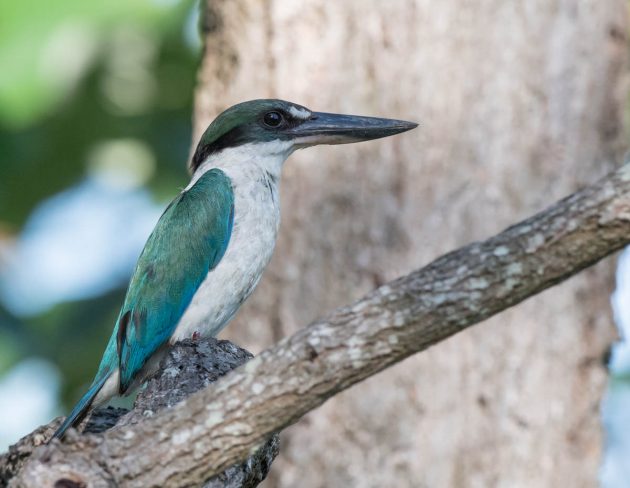
Given how beautiful this kingfisher is, the Latin species name of sordidus (shabby, dirty) seems particularly unfair.
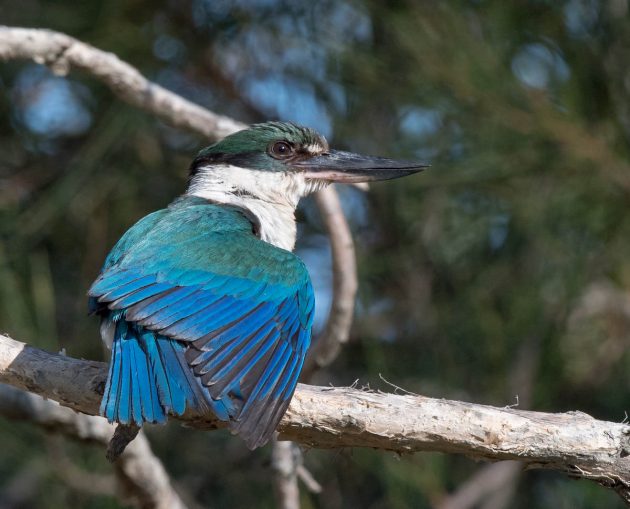
It is a kingfisher specializing in mangroves and adjacent mudflats – though if I remember correctly, I got at least one of these photos at the parking lot of Tinchi Tamba Wetlands (Brisbane).
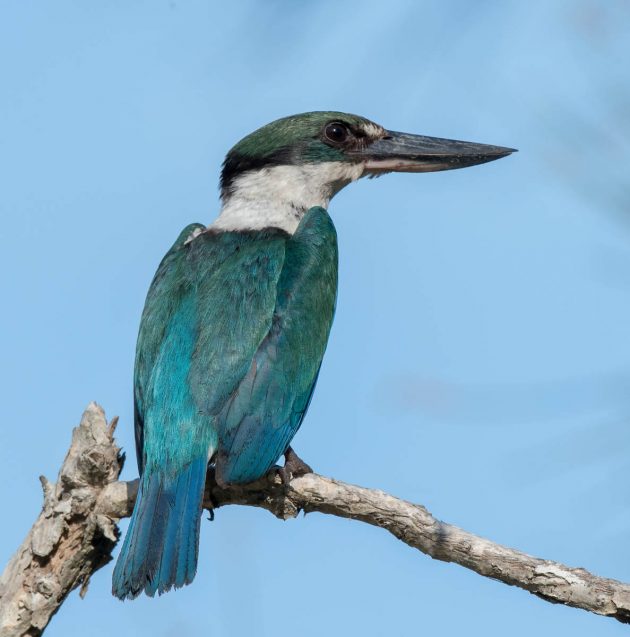
The name Torresian indicates a relation to the Torres Strait, the strait between Australia and New Guinea connecting the Coral Sea with the Arafura Sea.
My best guess is that this name was borrowed from the Torresian Crow.
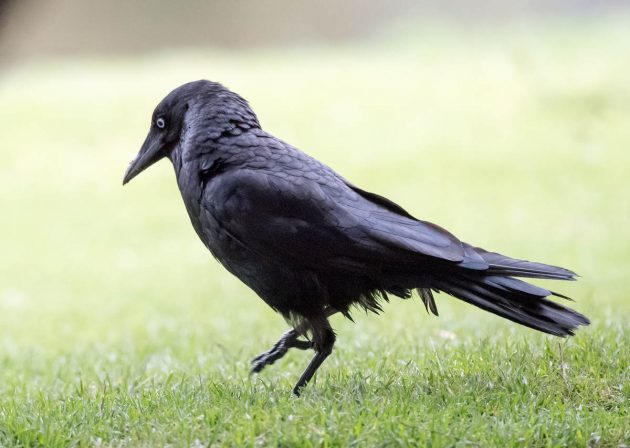
Most likely, Australia is the original location from which corvids have dispersed globally – read “Where song began” by Tim Lowe if this sounds interesting to you.
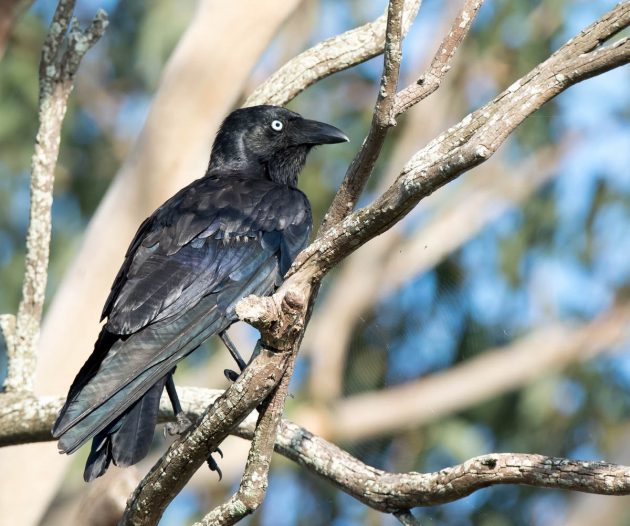
I took these photos in Brisbane – according to Wikipedia, the bird may not be extremely popular there: “The density of the species in Brisbane has become such that the noise resulting from the congregation of large numbers of individuals in communal roosting sites located in urban areas, has become a source of complaints by local residents” (source).
However, the Brisbane City Council (on its website) has a simple solution: “If noise is an issue, consider window treatments such as double-glazing, particularly in bedrooms, to minimize outside noise.”
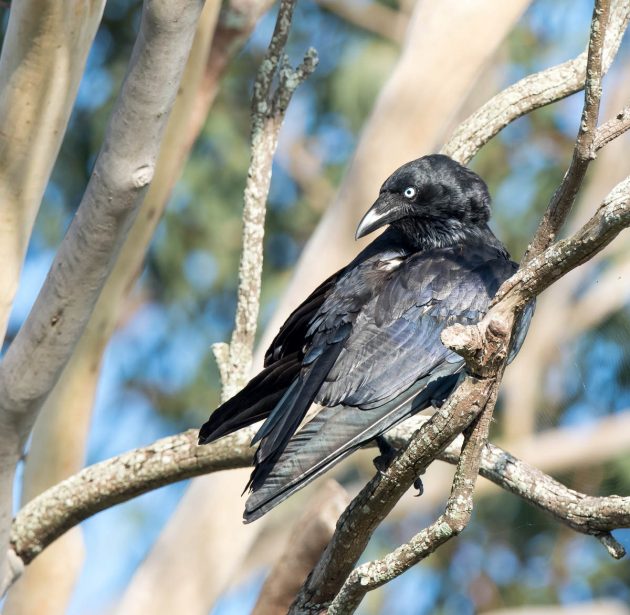
Juvenile birds do not have piercing white eyes yet, preventing them from working as hypnotists.
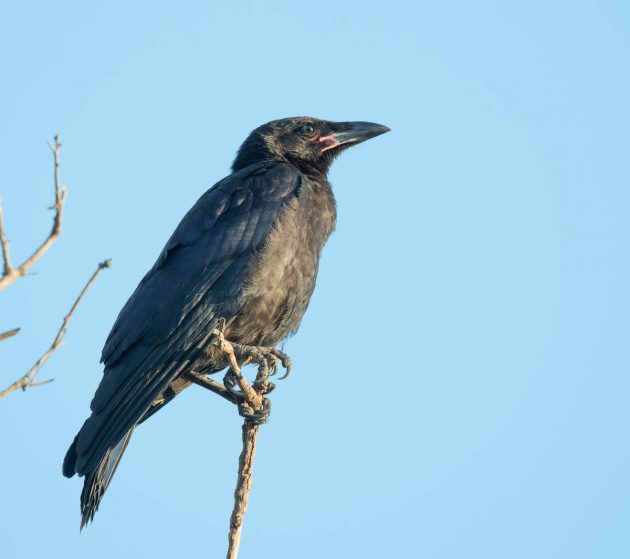
The male Chestnut Teal is quite beautiful and deserves a better photo than the one I managed to get. For the female, a black-and-white photo would have been sufficient. The male is also the subject of a Ph.D. thesis (“Male parental behaviour of the Chestnut Teal“) which unfortunately is not easily available online.
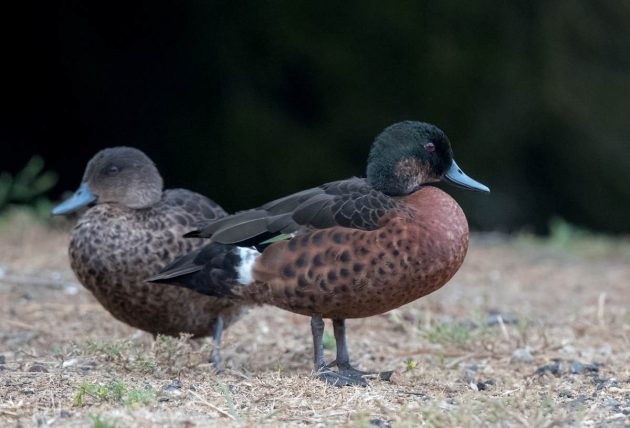
Tristan, the alcohol tester on duty at 10,000 Birds, will be glad to learn that there is an Australian sherry named after this species.
Somehow, the Bar-shouldered Dove reminds me of a pheasant – maybe Lady Amherst’s? At least the feathers around the neck.
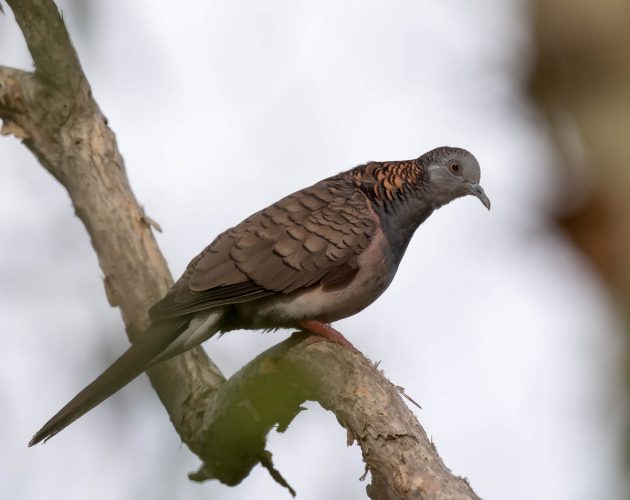
If you are interested in toxoplasmosis in Bar-shouldered Doves, this weblink is perfect for you.
It is probably a rumor that writing a post about Australia and not mentioning kangaroos is illegal, but why take the risk?
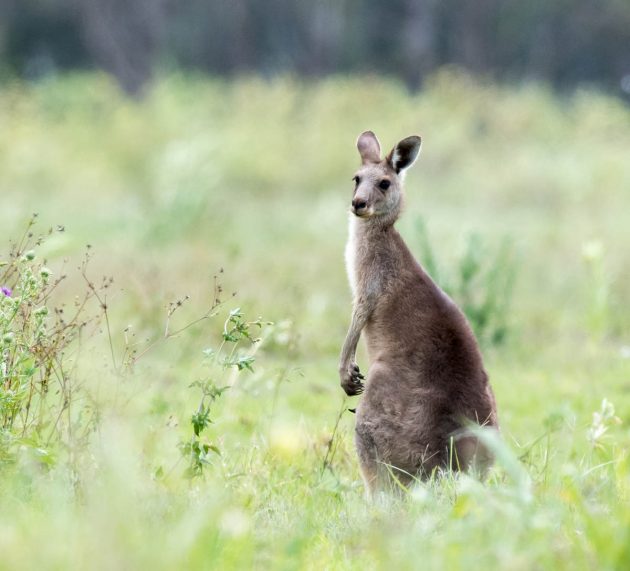
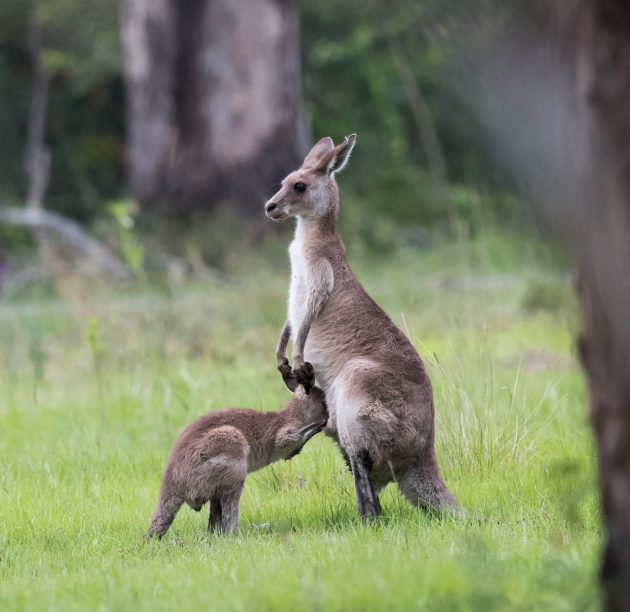
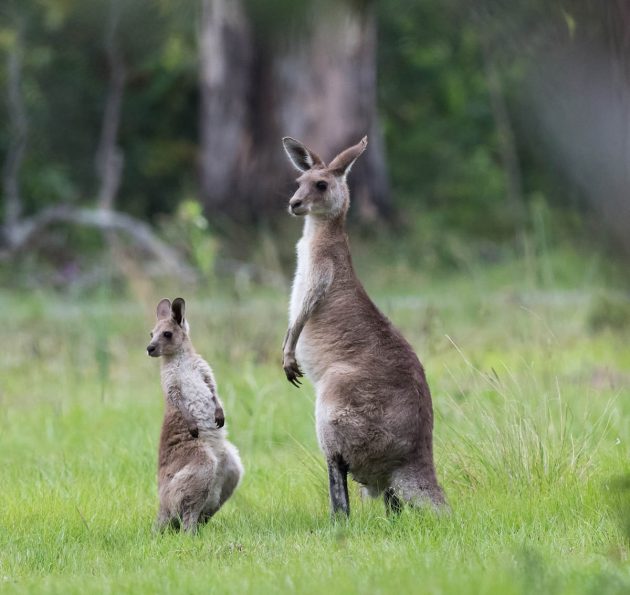













Fun and informative, as usual!